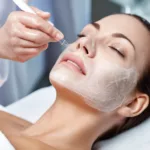27 November 2023
Discovering the Benefits and Considerations of Chemical Peels for Skin Rejuvenation
In the quest for youthful and radiant skin, individuals often turn to various skincare treatments. One such treatment gaining popularity is the chemical peel. This transformative procedure involves the use of a chemical solution to peel away the top layer of skin, unveiling a fresh and rejuvenated complexion beneath. Today, we delve into the world of chemical peels, exploring their benefits, potential risks, and the importance of proper aftercare.
Rejuvenating the Skin: How Chemical Peels Work
Chemical peels utilize a chemical solution, typically glycolic acid, to exfoliate and remove the outermost layer of the skin. By doing so, they stimulate the production of collagen and elastin, two essential proteins responsible for the skin’s firmness and elasticity. The process effectively diminishes the appearance of fine lines, wrinkles, and other signs of aging, revealing smoother and more youthful skin.
Transforming Skin Texture and Tone
One of the primary benefits of chemical peels lies in their ability to improve the overall texture and tone of the skin. These treatments are commonly performed on the face, neck, and hands, targeting areas prone to fine lines, mild scarring, rough patches, and dullness. Chemical peels can also address specific skin concerns, such as dark spots or hyperpigmentation caused by sun damage or conditions like melasma. By removing damaged skin cells, chemical peels unveil a brighter and more even complexion.
Considerations for Different Skin Types
While chemical peels are generally safe for all skin types, individuals with darker skin may experience a potential side effect known as post-inflammatory hyperpigmentation. This condition manifests as dark spots on the skin following the treatment. To minimize this risk, it is crucial for individuals with darker skin tones to consult with a dermatologist or skincare professional who can provide personalized advice and recommendations.
The Importance of Professional Guidance
When considering a chemical peel, seeking professional guidance is essential. A dermatologist or skincare specialist can assess your skin type, identify specific concerns, and determine the most suitable type and strength of chemical peel for optimal results. Their expertise ensures that the treatment is tailored to your unique needs, minimizing the risk of adverse effects.
Post-Treatment Care and Sun Protection
After undergoing a chemical peel, proper aftercare is crucial to ensure optimal healing and results. It is vital to avoid sun exposure immediately following the treatment, as the skin is more susceptible to sunburn. Wearing sunscreen with a high SPF and protective clothing is essential to shield the skin from harmful UV rays. Additionally, maintaining a consistent skincare routine, including gentle cleansing and moisturizing, helps support the skin’s healing process and maintain its newfound radiance.
Conclusion:
Chemical peels offer a transformative solution for individuals seeking to rejuvenate their skin and achieve a more youthful complexion. By effectively exfoliating the skin and stimulating collagen production, these treatments can address various concerns, such as fine lines, scarring, dark spots, and uneven skin tone. However, it is crucial to approach chemical peels with caution and seek professional guidance to ensure the best possible outcomes. By following proper aftercare instructions and protecting the skin from sun damage, individuals can enjoy the full benefits of chemical peels and reveal their radiant and revitalized skin.



